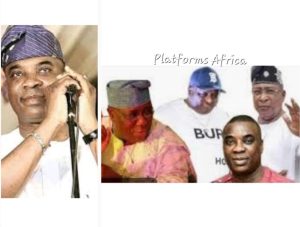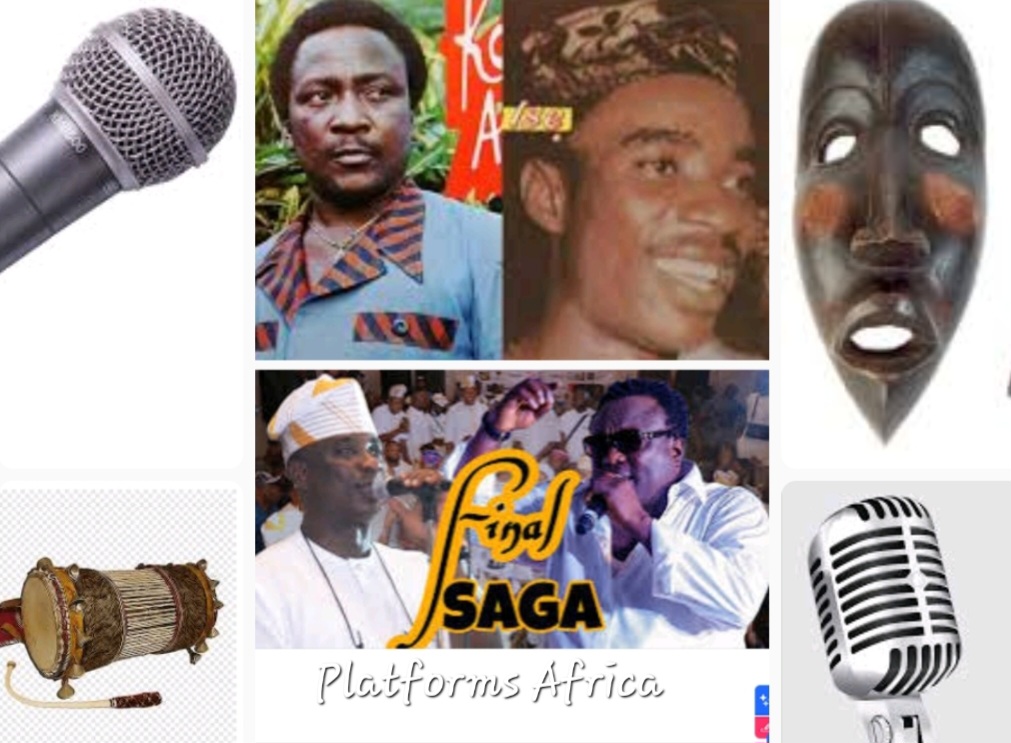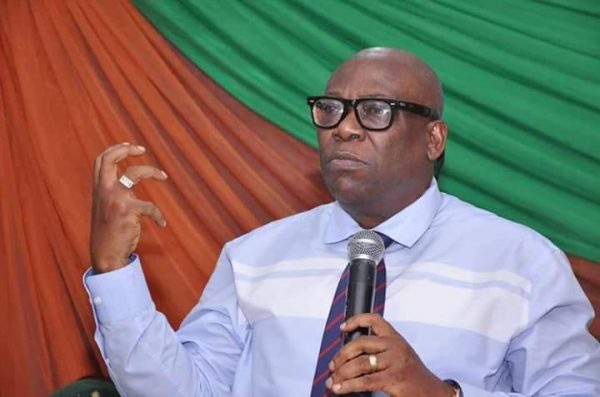“These musicians’ recent quest for supremacy is not new. With names and dates, this is how the battles were fought with traditional spells, incantations, and talisman aimed at deconstructing and liquidating their rivals in the olden days.”
Like every lover of Yoruba traditional music, language and culture, I have of recent been inundated with requests to lend a voice to the newest raging fire in the Fuji music genre. Since the passage of Alhaji Sikiru Ayinde Balogun, popularly known as Ayinde Barrister or Agbajelola Barusati, there have been longstanding tiffs on whom of the trio of Ayinde Omogbolahan Anifowose, KWAM 1; self-named King Saheed Osupa (K.S.O.) and Wasiu Alabi Pasuma, was the “King.”
These musicians’ recent quest for supremacy is not new. From time immemorial, supremacy battles have been part and parcel of Yoruba music. Apparently now tempered by modernity, in the olden days, the battles were fought with traditional spells, incantations and talisman aimed at deconstructing and liquidating their rivals. Mostly fought on genre basis, I submit that pre and post-independence entertainment scene would have been livelier, far more robust than it was but for the acrimonious liquidating fights of those eras.
In the Sakara music, Abibu Oluwa, a revered early precursor of this Yoruba musical genre, who reigned in the late 1920s and 1930s, had Salami Alabi Balogun, popularly known as Lefty Salami, Baba Mukaila and Yusuff Olatunji as members of his band. Oluwa praise-sang many Lagos elites of his time, especially Herbert Macaulay to whom he sang his praise in the famous track named “Macaulay Macaulay.” In it, he sang the foremost Nigerian nationalist’s alias of Ejonigboro – Snake on the Street and prayed that he would not come to shame.
READ ALSO:
VIDEO: K1 De Ultimate Apologises, Calls Out Kollington, Osupa, Obesere, Others For Truce
FIRE-FOR-FIRE: K1 De Ultimate, King Saheed Osupa Exchange Banters In Fresh Fuji Controversy
Banana Duct Taped To Wall Sells For $6.2 Million At NYC Art Auction
K1 Vs Osupa Feud Worsens, Media Aides Kunle Rasheed, Tunde Busari in Battle Royal
We’ll Back A Northern Candidate For President In 2027 — ACF
Sakara also produced the likes of S. Aka Baba Wahidi, Kelani Yesufu (alias Kelly). It was sung with traditional Yoruba instruments like the solemn-sounding goje violin whose history is traced to the north, and the roundish Sakara drum, beaten with stick and whose appearance is like that of a tambourine. Sakara music is often called the Yoruba variant of western blues music because of its brooding rhythm though laced with a high dosage of philosophy.

When Oluwa died in 1964, he literally handed over to Lefty who, born on October 1913, died December 29, 1981. Lefty, a talking drummer under Oluwa, churned out over 35 records before his demise, one of which was a tribute to Lagos monarch, Oba Adele (Adele l’awa nfe – Oba Adele is the king we want) and another to the Elegushi family. I dwelt considerably on Sakara because it is believed to have had considerable influence on other genres of traditional African Yoruba music, especially Apala and Fuji, with the former sometimes indistinguishable from Sakara.
Apala music, whose exponent is said to be Haruna Ishola, originated in the late 1930s Nigeria. Delivered with musical instruments like a rattle (Sekere) thumb piano, (agidigbo) drums called Iya Ilu and Omele, a bell (agogo) and two or three talking drums, Apala and Sakara are the most complex of these genres of traditional Yoruba music, due to their infusion of philosophy, incantations and dense Yoruba language into their mix. Distinct, older and more difficult in mastery than Fuji music which is considered to be comparatively easy to sing, Ayinla Omowura, Ligali Mukaiba, Kasumu Adio, and many others were Apala leading lights of the time. The three genres have very dense Islamic background.
The latest entrant of all the three genres is Fuji. Pioneered by Ayinde Barrister no doubt, for an Apala musician biographer like me, I am confused that Omowura, as far back as early 1970s, asked listeners in need of good Fuji music to come learn from him – “Fuji t’o dara, e wa ko l’owo egbe wa…” Sorry, I digressed.
While KWAM 1 emerged with his Talazo music from the ashes of his being a music instrument arranger for Barrister’s musical organization in the early 1980s, the feud in the house after Barrister’s death erupted when narratives allegedly oozed unto the musical scene that KWAM 1 referred to himself as the creator of Fuji music. He however promptly denied the claim. For decades, Osupa and Pasuma were locked in horns over supremacy of the Fuji music genre. In August 2023, the two however seemed to have decided to thaw their feud as they shared stage with Wasiu Ayinde, at Ahmad Alawiye Folawiyo, an Islamic singer’s 50th birthday celebration in Lagos. KWAM 1 glibly acted as their senior colleague at the event.
As an indication that they are no bastards of the teething and recurrent supremacy battles that emblemize traditional Yoruba music, the three Fuji music icons seem to have gone into the trenches again. It first started with Taiye Currency, an Ibadan-based alter-ego of Pasuma picking a fight with the musician who self-styled himself Son of Anobi Muhammed’s Wife. In a viral video, Currency had disclaimed reference to Pasuma as his “father” in the music industry. In another video not long after, KWAM 1, like some kind of father figure, was shown asking Currency to apologize to Pasuma.
A few days ago, a video of Osupa went viral. Therein, he was chastising a particular hypocrite he called “Onirikimo” and “alabosi”, who is “stingy and is ready to shamelessly collect money from those under him.” Osupa also claimed that this “shameless elder” had strung a ring of corn round his waist and should be ready to be made fun of by hens. Watchers of the endless tiffs among these Fuji icons swear that KWAM 1 was the unnamed Fuji musician Osupa was casting aspersion on.
The trio of Sakara, Apala and Fuji music also witnessed such petty squabbles. While many claim that the fights were promotional gambits aimed at having their fans salivate for their hate-laced musical attacks against one another, some others claim that the rivalries were genuine. In the Apala music scene, Haruna Ishola and Kasumu Adio fought each other to the nadir, with Adio, who sang almost in the same voice and cadence as Ishola, suddenly vamoosing from the musical scene. Rumours and speculations had it then that a mysterious goat bit Adio and rendered him useless. While Ayinla Omowura also fought Fatai Olowonyo, Fatai Ayilara, among others in the Apala genre, the duo of Yusuff Olatunji and S. Aka also feuded till their last days. This is not to mention the interminable fight between Kollington Ayinla and Barrister.
If the tiff between the trio of KWAM 1, Osupa and Pasuma is about age and Yoruba traditional respect for elders, KWAM 1 would easily go away with the trophy of the best of the three. However, if philosophical depth, musical elan, research of lyrics and deployment of Yoruba language are at issue, none of the other two musicians can unbuckle Osupa’s sandals. Osupa began his musical career in 1983 as a teenager and has gone through the mills, his late father being a musician, too and Awurebe music lord, Dauda Epo Akara’s musical contemporary.
Unlike their predecessors, the three Fuji musicians are literate and should thus address their musical issues in more mature manner. Osupa even recently bagged a degree from the department of Political Science, University of Ibadan. One thing they should know is that, whether one is supreme to the other or not, their fans will readily queue behind the brand that delights them.
Platforms Africa





